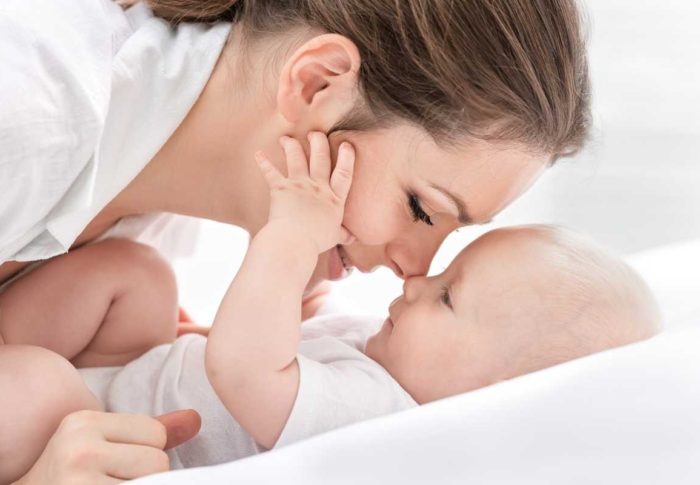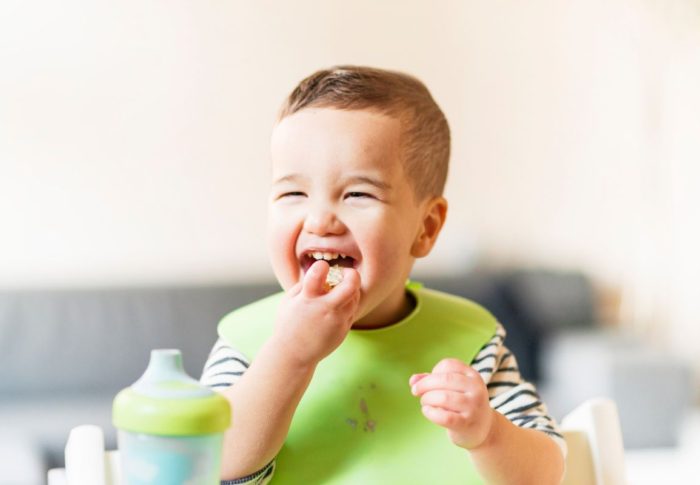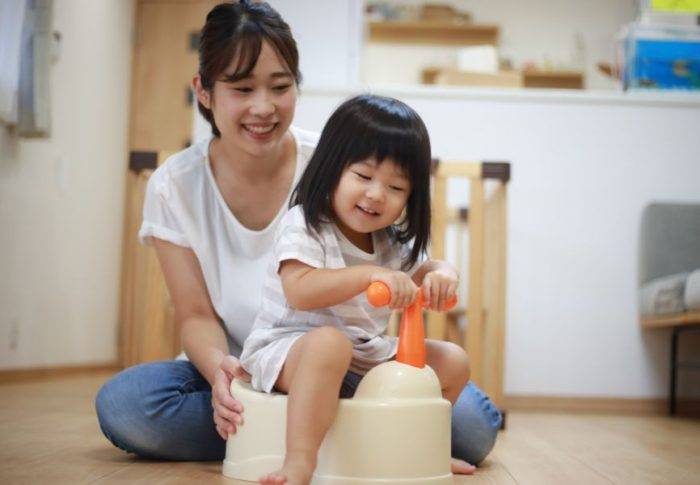
Can you use just water to wet cloth baby wipes? Yes! Water is the best solution!
Are you searching for the right solution to use with your cloth baby wipes? Look no further than your sink! You can use just water to wet your cloth baby wipes. It works great!
When you do an internet search for homemade baby wipe solution, you will find a wealth of information. There are so many combinations you can create at home. There are also many commercial solutions and sprays that you can purchase. One of the best kept secrets is that water makes a perfect solution.
This article will discuss some reasons why water works well, and the drawbacks of homemade and store bought wipe solutions. We will also talk about the easiest ways to store and dispense the water for your wipes.
Table of Contents
ToggleHow to Use Water with Cloth Baby Wipes
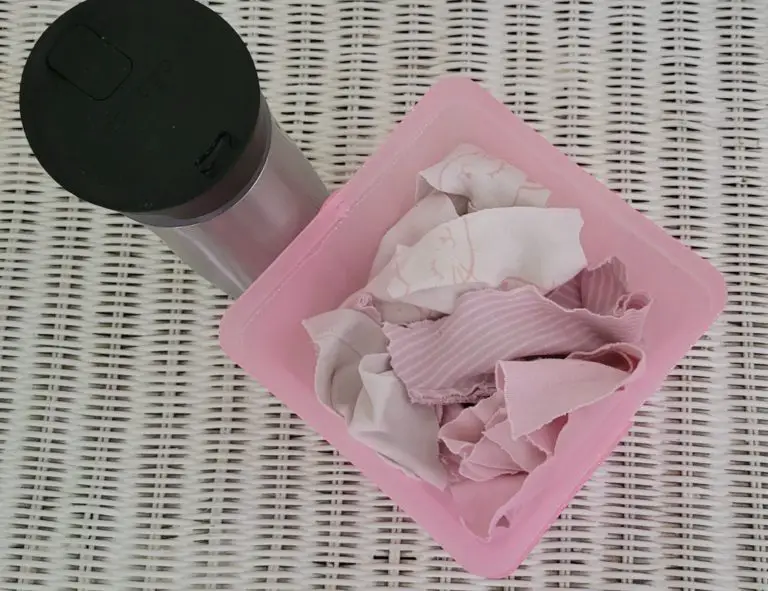
You can use any kind of dispenser that works well for you for wetting your wipes with water. I prefer to use an insulated travel coffee mug. I didn’t purchase one, but used one I already had at home. I can fill it with very warm water in the morning and it stays warm through most of the day. Even when it cools off, my girls don’t seem to mind the cooler temperature.
You can change the water as often as you like. Because there is nothing to spoil in it, you can leave it in the thermos for more than a day. A good time for me to fill it up is after I do the morning dishes and the water is already heated from the faucet. You can even have 2 thermoses or bottles and rotate them. That way if you forget to bring down the thermos to refill it, you can have an extra one to keep in the kitchen or bathroom.
I usually pour the water on the wipe over some kind of receptacle like the old diaper or a washcloth as a little excess water might drip as I’m pouring. After wiping my child, I use a dry washcloth to completely dry the area before putting on the new diaper. You can apply a diaper cream or moisturizer of your choice as well.
Some people prefer to use a spray bottle. However, I like the thermos because it is very easy to wash with soap and water, the straw on the spray bottle could harbor bacteria over time.
You can also use any other kind of water bottle. Or if you like to pre-wet your wipes, you can moisten them in a waterproof container as wet as you would like them to be. If you are taking your baby on the go, you can pack a watertight container or ziploc bag to place premoistened wipes in. Use them up when you get home so they aren’t in your diaper bag for too long and become musty.
For my method of making no-sew cloth baby wipes from material you already have at home, check out this post

Why I Use Water instead of Homemade Cloth Wipe Solution
Homemade Wipe Solution Only Has a Shelf-Life of 2-3 Days
There are so many options when it comes to homemade wipe recipes. Unfortunately, you can read on many sites that you should discard your solution every 2-3 days because it can start growing bacteria. If you premoisten your wipes, this would also mean washing any wipes that were unused. Many recipies are simple enough to not require a lot of time, but it is still a long-term committment to make new wipe formula every 2-3 days for however many years you have babies and toddlers in diapers. Using preservative free ingredients is probably healthier than the solution that comes on premade wipes, but water that is changed regularly is less prone to bacteria growth.
On a youtube video, one mother shared a method of marking the date on her tubs of homemade wipes so that she knew when to discard the solution and wash them. This is a good idea if you do choose to make your own solution.
Some of the Suggested Ingredients in Homemade Wipes Can Actually Be Harmful to Your Baby's Diaper Area
When I was researching homemade baby wipe solution, I was surprised at some of the suggested ingredients. I saw recipes including tea tree oil, apple cider vinegar, baby bath soap and essential oils.
Especially with female babies, girls and women, it is important to recognize that there is a fine balance of good bacteria in the vaginal area. Most gynecologists recommend not using soap at all when cleansing the vaginal area. Even minimal soap in the bathtub can cause vaginosis-(painful inflammation) in all females from babies to grown women. When this fine balance of good bacteria is affected by ingredients that are known to eliminate bacteria like tea tree oil/melaluca or vinegar, it can result in a painful and itchy condition called bacterial vaginosis. If the good bacteria in this “ecosystem” is wiped out or diminished, harmful bacteria can take its place and grow unchecked. If your little one cannot communicate, you may have no idea that they are in pain or discomfort or what is causing them distress because you might not visually notice this condition.
Once you cleanse an area with water and dry their diaper area and you bathe them regularly, there is no need for solution ingredients with antibacterial properties.
Even mild baby soap can also have a drying effect on the skin. Water is the perfect pH for the skin.
Soaps and other ingredients in homemade solution recipes can also leave a residue or film on your baby’s skin. One site suggested rinsing the area with water after using the solution she recommended. If you just start with water, it is just a simple one-step process.
If you are concerned about adding skin conditioning or soothing agents to the wipes, you can apply them to baby’s skin after wiping. Before placing a clean diaper on, I usually use either a barrier cream like petroleum jelly or some coconut oil on the outer area to help prevent rashes and moisturize their skin.
The Ingredients for Homemade Wipes Can Be Costly
When I look at the lists of homemade wipe recipies, there is often an initial investment in ingredients. Though they are diluted in the solution, it can be costly to get started by purchasing the products to include. It is still probably less expensive to make your solution than to buy disposable wipes, but water still wins in the budget friendly category.
What About Store Bought Baby Wipe Solutions?
There is a wide range of premade baby wipe solutions that can be purchased. Many mothers highly recommend them. If you are using something that is working well for your baby and works with your budget, I encourage you to use what you believe is best. When I looked into these formulas,
At first glance when shopping for wipe solution, the bottles range from 18$-25$ and up. Even though many of these are made to be diluted, you can read feedback about needing to discard the solution once made 1-2 times per week because of a rancid smell or mold appearing on the wipes they premoistened.
It is so much easier and more budget friendly to go completely natural by just using water! Think about how mothers would have cared for their babies throughout history,and those today around the world that don’t have access to these products or ingredients. Water is a universal solution that has worked for mamas all over the world.
In conclusion: You can Try Water for your Wipes Today and See How it Works for Your Baby
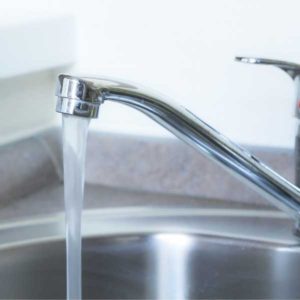
Try using water for your cloth wipes and see if it works for you and your baby. It will make life easier for you too as you will be spending less time making wipe solution and having to discard any unused portions. If you are worried about the condition of your baby’s skin without some of the soothing ingredients in wipe solutuion, simply cleanse the area and apply a topical cream or coconut oil to moisturize their skin.
Using water for wipes can be healthier for your baby, save you time and also save money. I hope you can try this today and let me know how it is working for you in a comment below! Thanks so much for your time!
For more ways to make diapering and cloth diapering more easy and more affordable check out these articles!

